McCoy's Taipan: 1 bite = 250,000 mice or 100 people (9 photos)
McCoy's taipan, the inland taipan, or dandarabilla as the local Aborigines call them, is a small and seemingly unremarkable snake. They grow up to 2.5 meters in length, like most members of the asp family. This means that the taipan's relatives include cobras, black mambas and sea kraits. 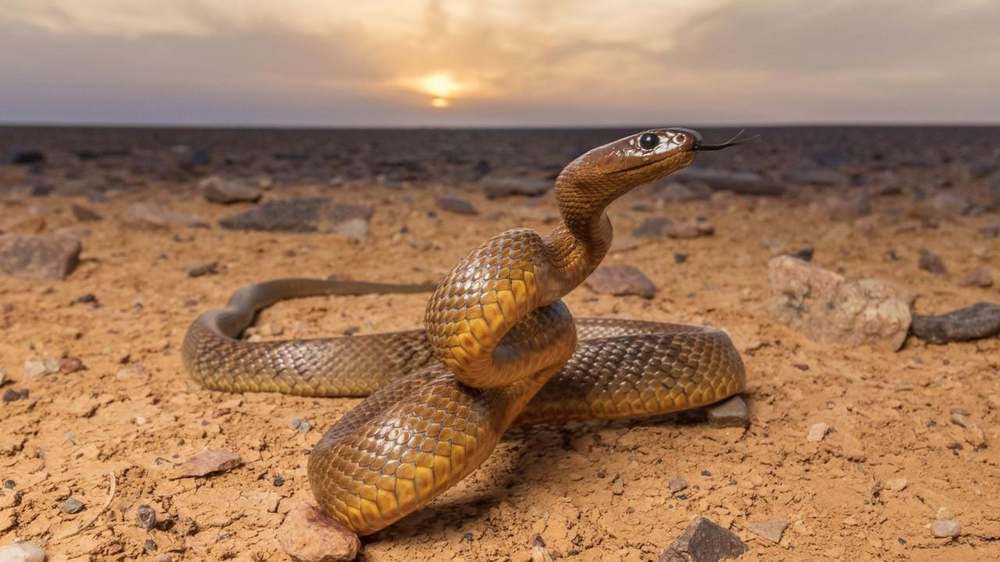
The new sheriff of this desert.
The serpentarium is perfect! And among all these reptiles, our heroes take an honorable place for the most concentrated and toxic poison. 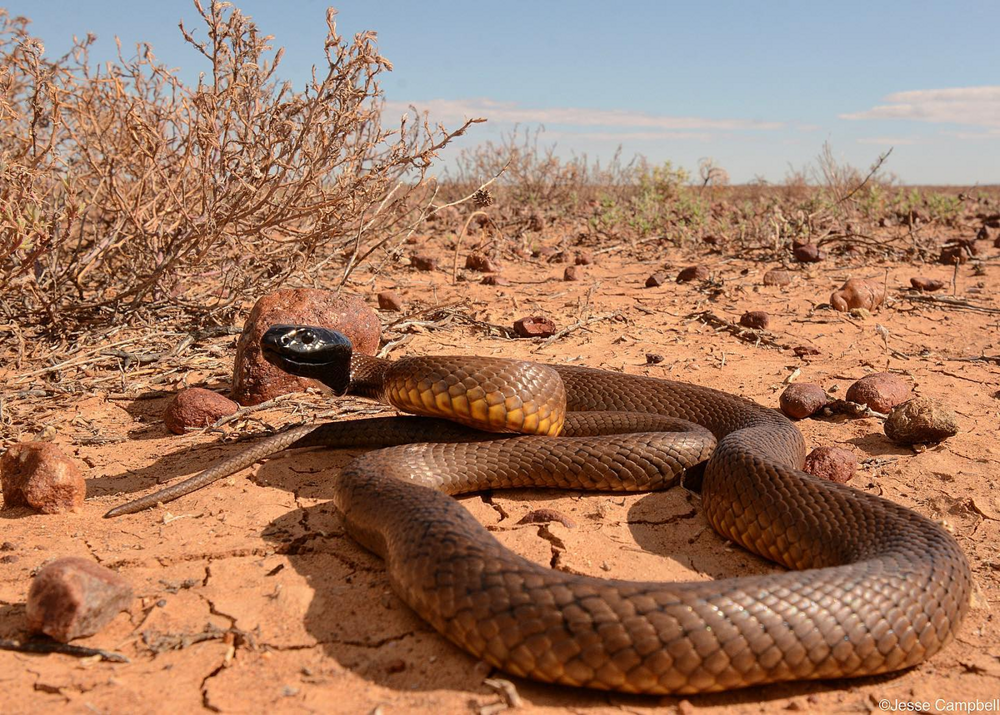
And you say your ex was toxic!
You can meet McCoy's taipans in a couple of states in central Australia. Everything here is logical: the most dangerous reptiles should live in the very heart of the monstrous inverted continent. Their victims don't even have time to squeak before dying! 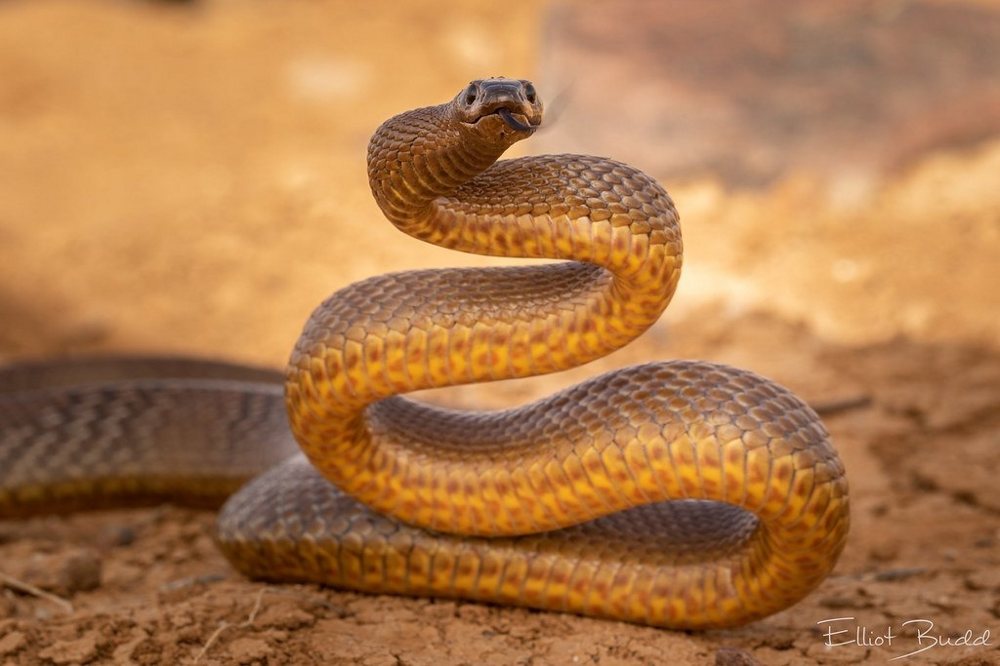
In this sense, the taipan can be called the most humane predator, because the victims die almost instantly.
Scientists have calculated exactly how deadly a taipan is by developing a special scale to compare the venomousness of reptiles. There is such a thing as LD50. It means the amount of poison required to kill half of all experimental animals. The lower this indicator, the more deadly the poison. 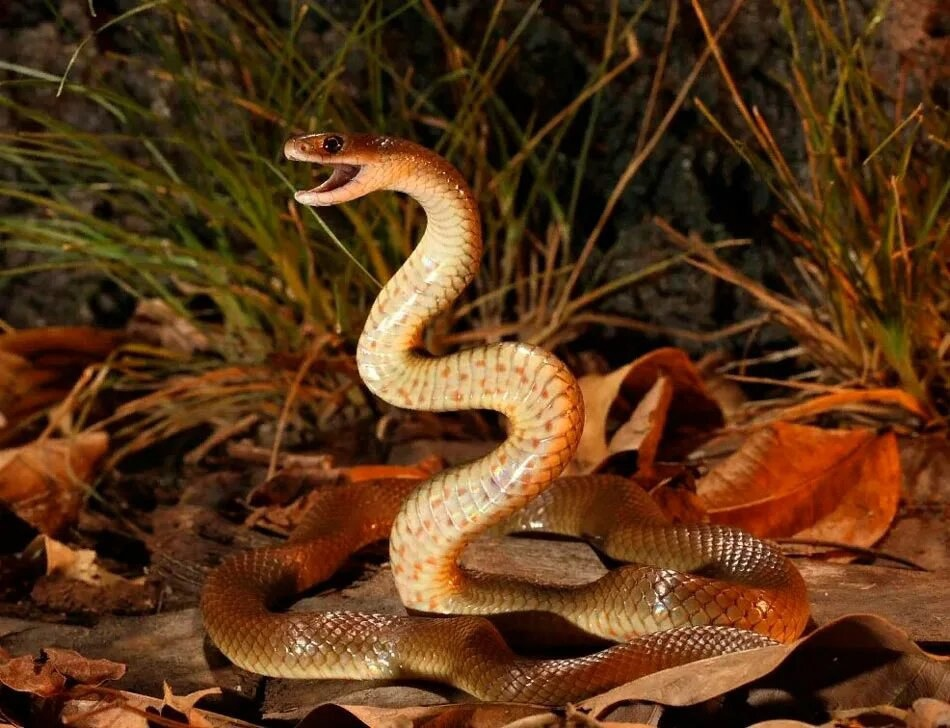
When at a concert you can’t see anything from the back row.
So, the LD50 of dandarabill poison is 0.025 mg/kg. Simply put, one bite is enough to kill 250,000 mice! If we count in people, then one dose is enough for 100 people. For comparison, the LD50 of venom in the common sea snake is 0.164 mg/kg, in the Indian cobra it is 0.565 mg/kg, and in the North American rattlesnake it is 11.4 mg/kg. 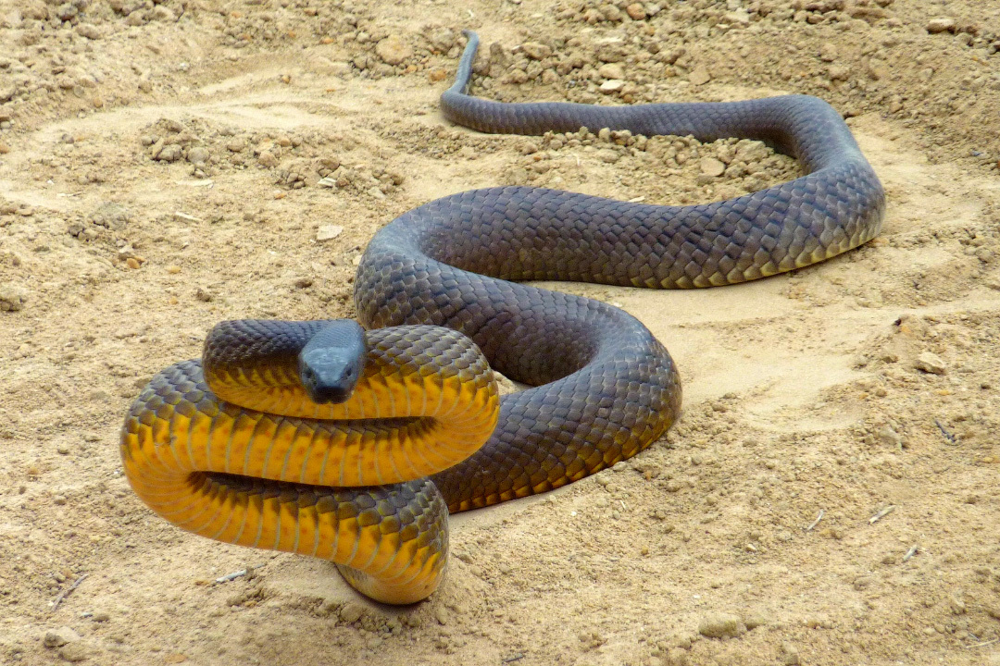
That's pretty much how I'm sitting at the computer right now.
Taipan venom contains a cocktail of chemical compounds that affect almost every system. Powerful neurotoxins “switch off” the nerves, preventing the victim’s body from contracting its own muscles until breathing stops. Hematoxins increase blood clotting, causing blood clots to clog blood vessels. Myotoxins disrupt muscle function, making it impossible for the unfortunate victim to escape. All these compounds individually do not do anything good, but in combination they are weapons of mass destruction of mammals! 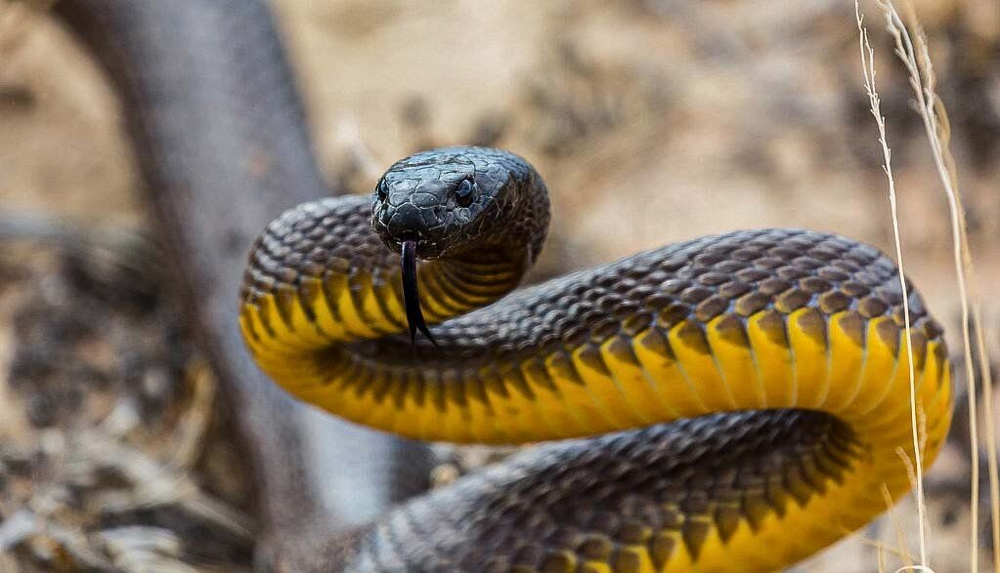
It’s no wonder that the combination of black and yellow causes us unconscious anxiety!
Why mammals? Because the poison works on other animals, but not as effectively. The main prey of reptiles are rodents. Snakes do not have any special scores with mice and rats; it just so happens that any warm-blooded little thing is most often found in the lifeless wastelands of central Australia. Therefore, snakes created the perfect weapon that kills almost instantly. Thanks to the power of their venom, snakes do not worry about the defensive reactions of their prey. If many other reptiles bite and immediately crawl away, then our heroes grab the food in a ring and inflict many, many bites on it at once. From this the victim switches off instantly! Remember about 250,000 mice? Here, and here is one unfortunate one! 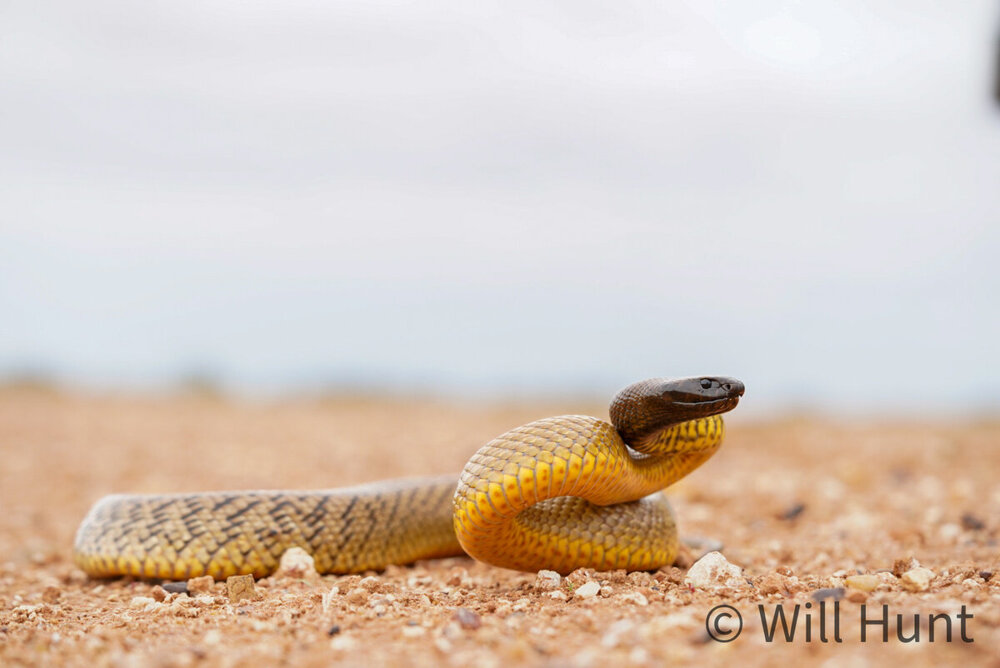
Traditionally, the venom of desert predators is the strongest, because there may not be another chance to catch prey in such harsh conditions.
So, we figured out the reasons for the toxicity of McCoy's taipans, became convinced of the strength of their poison, and understood their hunting strategy. I think now you are ready to read one equally shocking detail about these reptiles. Attention: since the invention of the vaccine, there has not been a SINGLE case of human death from these snakes. How do you like the twist? The most poisonous snake didn’t kill anyone, it’s a joke for the chickens! 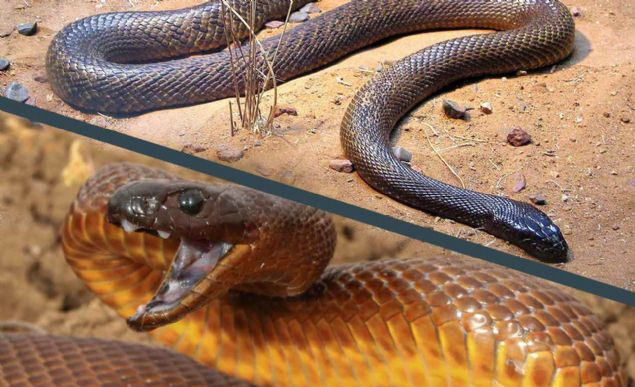
Depending on the time of year, the color of the taipan changes. In summer it is lighter so as not to overheat so much in the scorching sun, and in winter it is dark to retain heat.
Taipans lead an ascetic lifestyle, and it is almost impossible to meet them just like that. They are not the first to approach people, and in the event of a collision they will try to crawl away as quickly as possible. If escape is impossible, the snakesThey rise above the ground and hiss menacingly - you can’t just miss such a warning! 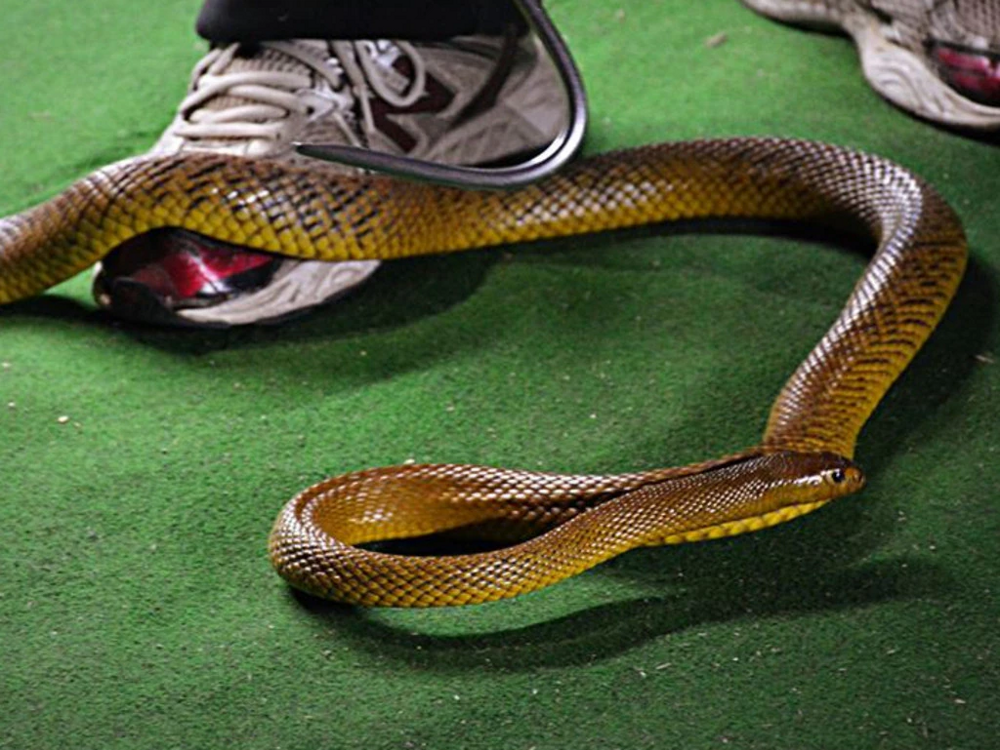
Wires are scattered all over the serpentarium! You walk around and trip over them!
Almost all bites today occur to herpetologists and caretakers of zoos, special centers and other institutions for keeping poisonous reptiles. That is, if the snake is not disturbed or handled, the chances of being bitten tend to zero. In addition, McCoy's taipans, although not extinct, are protected by Australian laws - a double reason to leave the animals behind and go about their business.






























